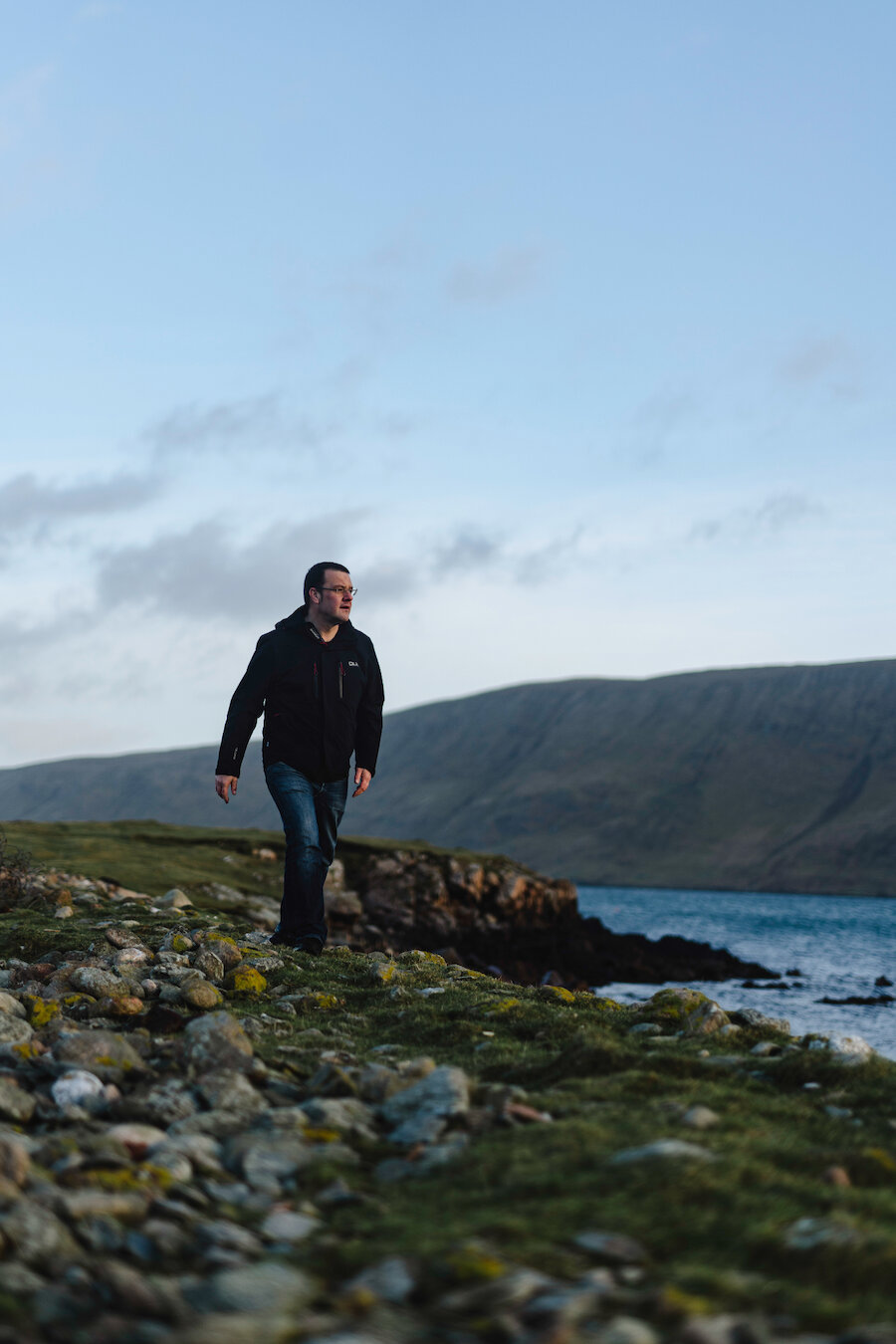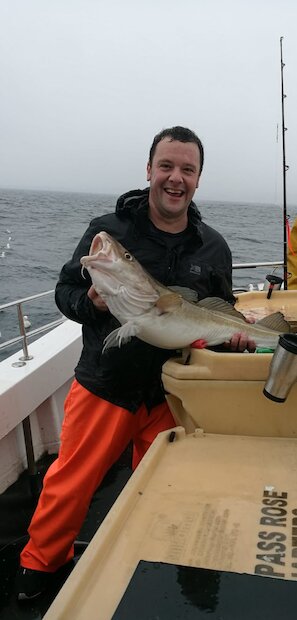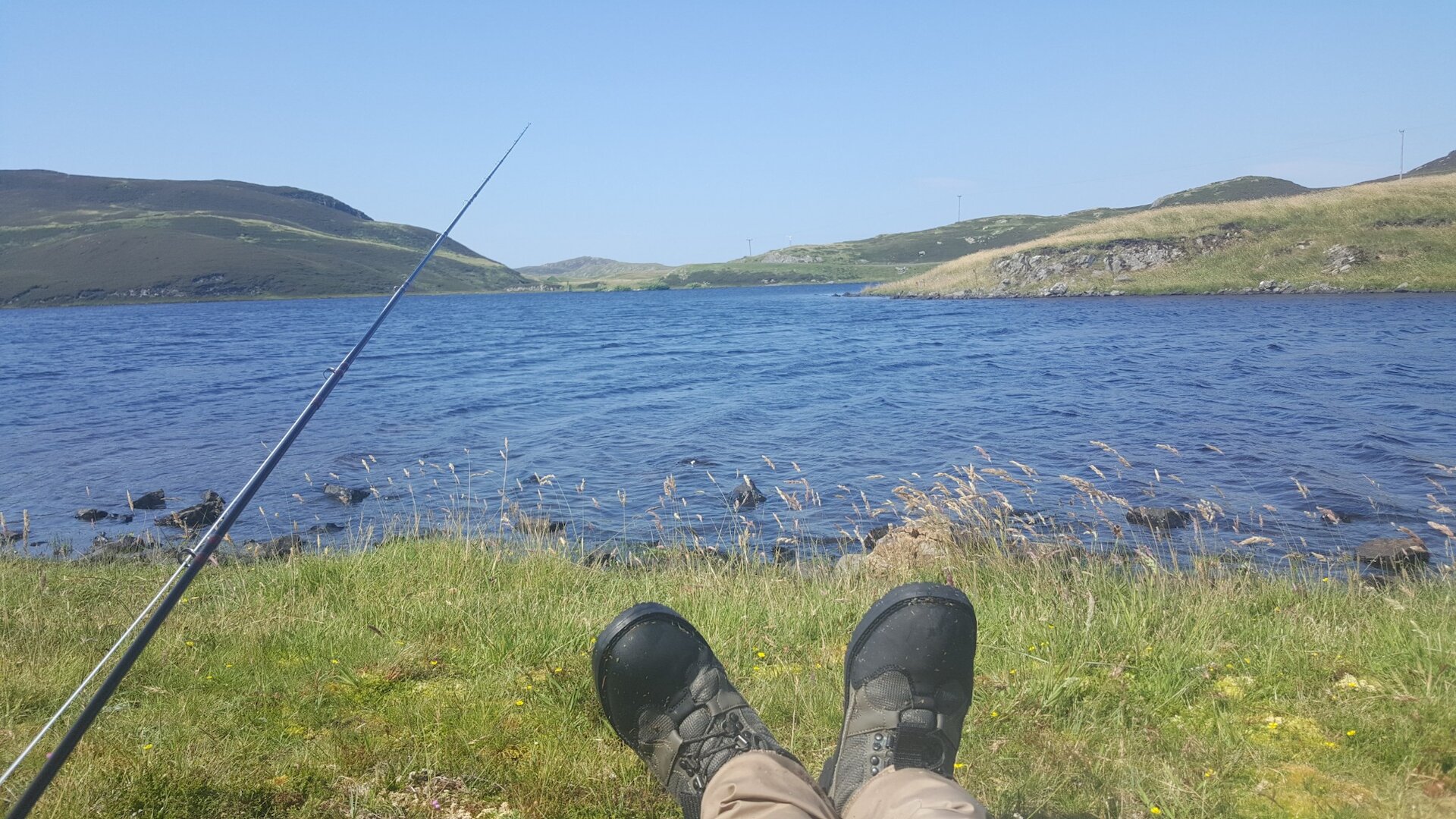It’s quite the contrast to the time when he was an Edinburgh-based principal planner with the Scottish Government.
Seeking a better work/life balance was one of the driving forces behind Simon’s decision to move back to Shetland with his wife.
He says, “I was working too long hours in a high-pressure environment, working too hard taking too much on and not getting much reward back. The time felt right to move back to Shetland and take up a position where I could make a positive impact on places and people and have a better work and life balance.
“I’ve been back nearly five years now and recently took up the position of the team leader of the coastal and marine planning team, which is a great job given my interest in the sea, aquaculture, flood risk, water… and most importantly fishing!”
While angling – especially fly fishing for trout – is Simon’s main passion he also enjoys hill walking, exploring beaches and nature.
“Shetland is absolutely perfect for all these, and they were some of the main reasons for moving from a city to live here. I stay in the main town, Lerwick, but the countryside and many fishing locations are literally just a few minutes away.
“I can go fishing in my lunch break if I so wish. On the mainland it would sometimes take over an hour just to get out of the city and through all the traffic and even then, you would go somewhere that is busy.”






